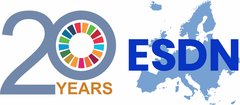SINGLE COUNTRY PROFILE
Tuesday, 18 August 2020
NSDS was approved by the Government in 2003.
In September 2009, the Government of Lithuania adopted a new version of the NSDS of Lithuania. There are new items included in it, such as the Plan of Implementing Measures for the Strategy with concrete bodies responsible for its implementation. A list of SD indicators is also supplemented to the new NSDS.
In 2011 the NSDS was updated again by making few minor corrections in the text.
The NSDS covers all the three dimensions of SD plus territorial development and development cooperation.
Ministry of Environment
No information available.
- Evaluation Report on NSDS (2003-2004) (in Lithuanian)
No information available.
No information available.
No information available.
No information available.
No information available.
Lithuania submitted its first Voluntary National Review in 2018.
Lithuania will submit its second VNR in 2023.
Generally, the NSDS is understood as ‘umbrella strategy’. There are many sectoral strategies dealing with issues addressed in the strategy and for their implementation local authorities are important, e.g. environmental issues, such as air, water, waste, sea management, etc. In this context, special seminars are held for local authorities on NSDS issues and implementation, including awareness raising and knowledge building workshops on special issues, such as SD education.
EU linkages
The priorities and objectives of the EU Strategy for Sustainable Development (EU SDS)are integrated into the NSDS.
The National Commission for Sustainable Development (NCSD), established in 2000, includes representatives of the various national ministries and is chaired by the Prime Minister. The NCSD plays an important role for the horizontal coordination. However the operation of the NCSD has been brought to a standstill.
Policy coherence is presented in the NSDS as one of the main principles for SD implementation: SD objectives and tasks must be implemented by incorporating environmental, economic and social development objectives into strategies of different economic sectors and the development of regions.
For the UN Conference in Johannesburg in 2002, Lithuania developed a ‘National Report on SD’.
As internal review, implementation reports are to be submitted bi-annually to the NCSD by a task force established by the Ministry of Environment with the support from other ministries. In 2003, the first report about the implementation of the NSDS was finalized and the last from bi-annual reports being published in 2012.
The Lithuanian NSDS provides a set of 84 indicators. These indicators are grouped according to the three pillars of SD: ‘’state of the environment’, ‘economic development’ and ‘social development’ plus territorial development. The indicators are available in the revised NSDS.
The National Commission for SD (NCSD) was established in 2000 and includes representatives of the various national ministries, NGOs and the business community. If necessary, other stakeholder groups are invited when their expertise in certain topics is necessary. The sub-national levels usually do not participate in meetings of the NCSD. However, the operation of the NCSD has been brought to a standstill.
Regional SD strategies and LA 21 initiatives
There are practically no regional initiatives on SD in Lithuania. One third of local authorities that had stated their commitments to start LA 21 processes in 1999 became more passive as there is no national support for subsidies to sustainability projects at local level. Several municipalities have been involved in the city network, particularly Union of Baltic Cities (UBC) projects. Other activities are:
- Environmental management projects (EMAS, Peer Review Projects) were implemented in Panevezys City Municipality and the Siauliai City Municipality in 2007.
- Sustainability and Integrated Management projects (Managing Urban Europe-25 project (Kaunas City Municipality, the Siauliai City Municipality; and SUSTAINMENT Project (the Panevezys City Municipality).
- Ministry of Environment has carried out sustainability survey at local level in 2007.
- UBC has promoted Europe a wide sustainability process involving local authorities of Lithuania in particular the Aalborg Commitment processes, including approx. 660 signatory cities and regional authorities. In Lithuania 2 cities have signed it.
- At present most of LA21 initiatives are not active any more. However, there is a number of projects ongoing at a local municipalities level related to the implementation of sustainable development, particularly climate change, quality of life etc.
In recent yers there were more focuson vertical implementation of NSDS.
Participation of stakeholders in sub-national activities
There is a weak stakeholder participation in the development of environmental and SD policy programmes in Lithuania.
Evaluation and review mechanisms at the sub-national levels, also in the context of Lithuanian NSDS
Evaluation does not operate in cities. Both Alytus and Kaunas City Municipalities have made the Aalborg Commitment baseline review reports. Moreover, Kaunas city has developed a Strategic development plan for 2005-2015 in accordance with the Aalborg commitments and it is revised every year (last revision in 2012).
Indicators used at sub-national level
The cities in Lithuania are using almost only environmental indicators as local SD indicators. However, there are also some economic or social indicators used to determine progress in various cases, such as:
- Local GDP per capita, changes compared to previous year, relation compared to the national GDP per capita;
- Material investments per capita and relation to the national investments per capita;
- Employment rate of persons aged 15-64 by county and relation to the national employment rate;
- Unemployment rate and relation to the national unemployment rate, etc.
